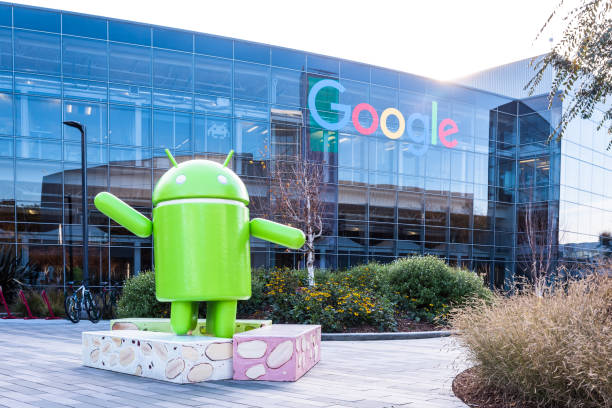Android OS is one of the most powerful, open-source and popular operating systems in the world used in almost all the major smartphones, tablets, and other devices. It is an extremely modular OS, allowing third-party developers to modify and enhance its features. This article looks at the various versions of Android OS, in order of release, from the earliest to the most recent.
Android Cupcake – Version 1.5
Released in April 2009, Android Cupcake (1.5) was the first version of the Android OS to use a graphical user interface (GUI). This version brought a few major changes, such as the ability to select your own keyboard, a significantly improved web browser, and support for multiple languages. It also offered support for widgets and the ability to pause, play and skip audio tracks from the lock screen.
Android Donut – Version 1.6
Released in September 2009, Donut (1.6) introduced the Voice Search feature – allowing users to search the internet, their contacts and music library by speaking into their phones. It also introduced an integrated camera and photo gallery, with support for flash. Last but not least, it brought the global search feature, which allows users to search the web, music and other apps from a single platform.
Android Éclair – Version 2.0/2.1
Released in October 2009, Éclair (2.0) introduced a few new features, such as a redesigned virtual keyboard, support for Bluetooth 2.1, and a unified email inbox. It also brought refinements to the camera, photo gallery and web browser, as well as the introduction of HTML5.
Android Froyo – Version 2.2
Released in May 2010, Froyo (2.2) introduced the animation framework and graphics improvements, as well as the ability to capture photos while shooting video. It also brought support for USB tethering, Runkeeper integration and improved battery life. Last but not least, it offered support for Android Market, which was later rebranded as Google Play.
Android Gingerbread – Version 2.3
Released in December 2010, Gingerbread (2.3) brought a few minor changes, such as a redesigned virtual keyboard, support for Near Field Communication (NFC) and improved copy/paste capabilities. It also introduced an improved camera app, as well as voice typing.
Android Honeycomb – Version 3.0
Released in February 2011, Honeycomb (3.0) brought a few major changes to the Android OS. It introduced the Action Bar, a customizable tool bar that allows developers to create easy-to-use applications, as well as improved hardware acceleration, a notification tray and support for the latest hardware (such as 3D graphics).
Android Ice Cream Sandwich – Version 4.0
Released in October 2011, Ice Cream Sandwich (4.0) brought significant improvements to the Android OS with the introduction of the Holo theme and a brand-new font. It also improved text input, added a Task switcher and brought refinements to the Action Bar.
Android Jelly Bean – Version 4.1/4.2/4.3
Released in June 2012, Jelly Bean (4.1 – 4.3) was a minor update that brought a few changes, such as improved battery life, support for multiple user accounts, and Google Now – a voice-activated personal assistant. It also brought enhanced Android Beam, which allowed users to transfer information between devices using Near Field Communication (NFC).
Android KitKat – Version 4.4
Released in October 2013, KitKat (4.4) brought a few cosmetic changes, such as a new, flat user interface. It also improved performance, multitasking, Bluetooth and printing capabilities. Last but not least, it offered general bug fixes and performance improvements.
Android Lollipop – Version 5.0/5.1
Released in November 2014, Lollipop (5.0/5.1) made some major changes to the Android OS, such as a new visual design and improved notifications. It also brought support for 64-bit processors, the option to use multiple SIMs, and a low-power Battery Saver Mode. Last but not least, it improved the Android Runtime (ART) for better performance.
Android Marshmallow – Version 6.0
Released in October 2015, Marshmallow (6.0) was a minor update that brought some refinements and bug fixes. It also improved voice search, Bluetooth and USB support, as well as battery life. It also added a new permission manager, allowing users to control their app permissions.
Android Nougat – Version 7.0/7.1
Released in August 2016, Nougat (7.0/7.1) brought a much-needed update, such as split-screen multitasking, improved performance and notifications, and improved developer tools. It also introduced a Night Mode that reduces blue light, as well as the Data Saver mode that limits background data usage.
Android Oreo – Version 8.0/8.1
Released in August 2017, Oreo (8.0/8.1) brought a few refinements to the Android OS, including improved performance, better battery life and security, as well as a picture-in-picture mode. Last but not least, it introduced Notification Dots, which allow users to quickly access app functions without having to open the app.
Android Pie – Version 9
Released in August 2018, Pie (9.0) is the latest version of the Android OS. It brings a redesigned user interface, improved artificial intelligence for better performance, better battery life, and some much-needed security enhancements. It also introduced adaptive brightness, which automatically adjusts screen brightness depending on the environment.
Conclusion
This article has looked at the various versions of the Android OS, in order of release, from Cupcake (1.5) to Pie (9.0). With each version of the OS, users have seen improvements in features, performance and security. As new versions are released, users can always expect new features and better performance as the OS is continuously developed and improved.




